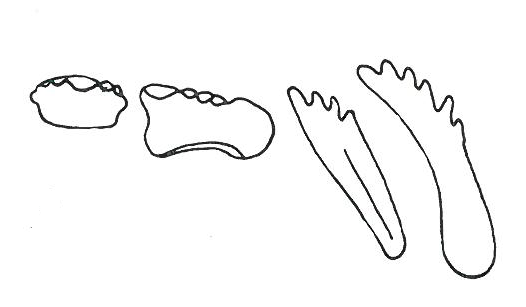Feeding
Spider conchs are herbivorous and feed on macroalgae and detrital films (Walls 1980). Sections of algae are eaten starting from the edge. Spider conchs look, taste and feel for their food using their eyes, small cephalic tentacles and proboscis (Berg 1973). Once food is located, the spider conch will position itself relatively above it. The proboscis usually remains under the protection of the shell but may extend only if necessary (See Video 1). The eyes are extended during feeding and scan the surrounding area for predators. If danger is detected, the spider conch will quickly retract its body back into its shell. Here it waits for the danger to pass before slowly emerging. The extended proboscis moves back and forth in an irregular pattern, with the mouth directed toward the substratum and the radula rasping. The radula teeth tear away sections and pass them directly to the gut.
Interestingly, some spider conchs have been observed feeding off their own shells by extending the proboscis through the stromboid notch and onto the shell (Berg 1973).
Video 1: Spider conch grazing on macroalgae.
|
Another interesting fact is that radula teeth can be used to distinguish strombid species, because their morphology is unique to each species (See Figure 1).

Figure 1: Representative spider conch radular teeth. Adapted from
Walls (1980).
|
|